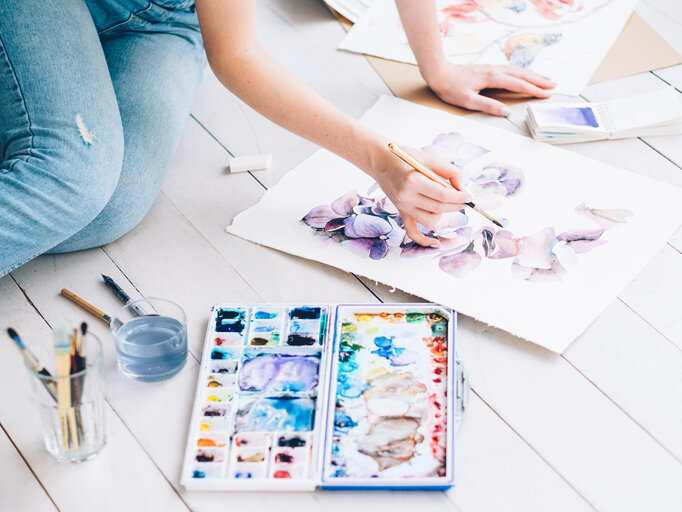Art therapy provides an outlet to solve psychological and educational problems through creativity.
Education and creativity have gone hand-in-hand since psychologists and teachers realized the potential of creative thinking as a teaching tool. Previously, in articles and webinars, we have talked about the role of art and literature in the teaching process.
Among these resources that help students merge expression with learning is art therapy. This Tuesday, December 1, at 4 p.m. (GMT-6), Monica Ogaz and Regina Freyman will join our next webinar to discuss “Art as a creative response to any human problem.“
Monica Ogaz is a renowned plastic artist, graduated from the Academy of Fine Arts of Florence and graduated in Art Therapy and Gestalt Psychotherapy from the Gestalt Institute of Bologna. She has dedicated her career to discovering and communicating the power of artistic expression in psychology and education. The academic director of the Accademia D’Arte AD’A in Florence and a creative painting teacher in Milan will share the forum with Freyman, a teacher with 15 years of experience at Tecnológico de Monterrey, where she has perfected storytelling as a teaching technique.
To better understand the topics that the invited experts will address during the webinar, we should first understand in-depth: What is art therapy? How is it utilized for psychological and educational purposes? How does it intersect with storytelling? Here are some basic notions that will help understand the ideas to be discussed in the next event.
What is art therapy?
In the simplest terms, art therapy is the practice of psychological therapy through the exercise of art. It is a relatively recent discipline that continues to evolve and define itself as times change, and different applications are discovered for it.
There are two widely accepted meanings within the academic community. The first comes from the Spanish Professional Association of Art Therapists (Ate), which describes art therapy as a profession in which artistic production is used as a caregiving tool to solve emotional and psychological problems and promote expression. On the other hand, the British Association of Art Therapists (BAAT) emphasizes that it is a type of psychotherapy that uses various artistic means to assist patient communication.
These two definitions paint a broad spectrum of art therapy as simultaneously a vehicle of expression, a resource for mental health care, and an educational tool. How would this multitudinous concept function in all these areas? Accomplishing this requires profound knowledge about the intersection of education, the practice of art, expression, and educational experience.
The usefulness and application of art therapy for different purposes
Art therapy originated in the field of psychology. It is a useful tool to help students with mental or emotional problems, like stress, anxiety, eating disorders, or traumas. It can also be instrumental in some cases of physical disabilities such as fibromyalgia. Similarly, students with neurodivergent problems may benefit from integrating art with behavioral therapies.
In theory, any situation that hinders verbal communication or traditional cognitive processes would be mitigated by integrating art therapy into the educational experience. In education, the objectives of art therapy are established to ensure effective learning. They serve wide purposes. The main goals include increasing self-esteem, confidence, and feelings of usefulness; developing creative and cognitive abilities; improving mobility and psychomotor skills; aiding personal development; consolidating the feeling of well-being, and increasing social interactions.
Plastic art is not the only medium to achieve these objectives; oral and written literature play an essential role in art therapy. Recreational reading also opens up cognitive channels that facilitate learning. Storytelling plays a vital role because it involves creative thinking to communicate and allows students to be integrated into the educational experience on their terms.
If you want to know more about employing art therapy in your teaching methodology or seeking other ways to learn, be sure to see our next webinar that will cover this topic in-depth by the experts Mónica Ogaz and Regina Freymann. It will be streamed from the Facebook page of El Observatorio this Tuesday, December 1, at 4 p.m. (GMT-6).
Have you applied art therapy in your classes? Have you had experience learning through this discipline? Tell us in the comments section below.
Translation by Daniel Wetta.
This article from Observatory of the Institute for the Future of Education may be shared under the terms of the license CC BY-NC-SA 4.0 
)
)


)